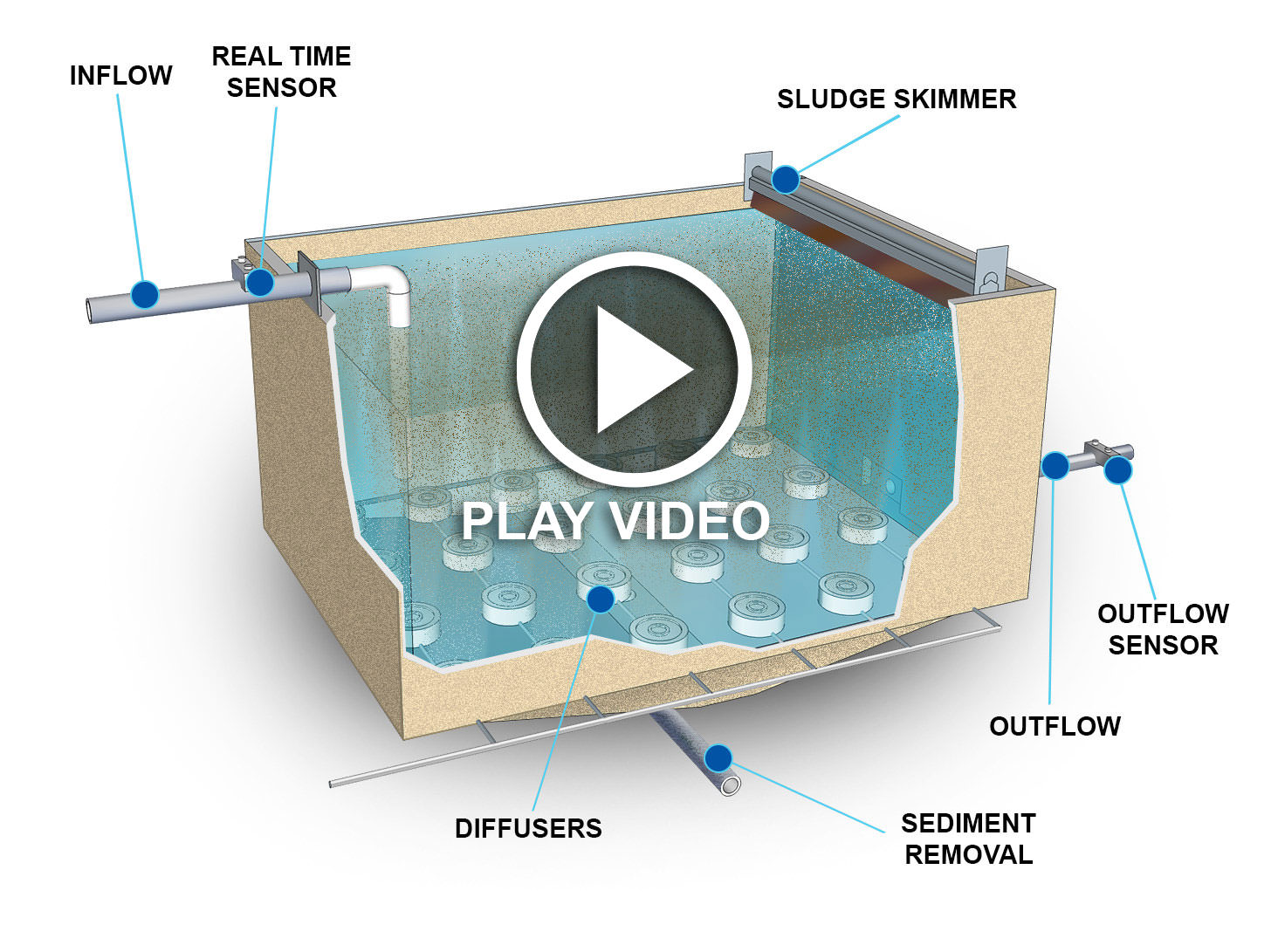How?
The Technology
The revolutionary low energy microflotation system that decontaminates wastewater on-site to eliminate sewer surcharges.
System Components:
Mikroflot installs the packaged or retrofittable system, supports it by a service plan including technical visits, diffuser consumable replacements, and access to web-based dashboard.
The system consists of:
- Submersible patent pending diffuser connects to an existing air supply.
- A sensing system to measure influent and effluent quality.
- A control and data transmission system for remote monitoring and diagnostics.
- A standard off-the-shelf skimmer.
A Deeper Look
The Technology Breakthrough:
Generating microscopic bubbles with dispersed airflow at low cost with simple equipment.
Mikroflot Acoustic Resonance Air Dispersion™ (ARAD) Technology vs. Conventional Dispersed Air
Conventional
Mikroflot
Dispersing air through a
1/1000th” pore-sized mesh.
= Large bubbles (> ¼”)
High turbulence
Results in inefficient flotation (removal) of contaminants.
Same assembly with Mikroflot
Acoustic Pulse Technology.
= Fine bubble dispersion
(< 3/1000th”)
Quiescent rising mode.
Results in very efficient flotation of contaminants with low energy expense.
The Acoustic Resonance Air Dispersion™ (ARAD) Advantage
Feature |
Advantage |
| < 1000 µm bubble size | > Collection efficiently – high removal rate with lower chemical requirements |
| Highly mono dispersed bubble size distribution | Less wasted airflow for better energy efficiency |
| Low pressure dispersed airflow with no PR nozzles | Easer installation, operation and service at lower cost |
| Quiescent bubble generation with laminar flow | Low detachment rates with less chemical… and 2-in-1 reaction/separation zone for smaller vessel footprint |
In the flotation of micrometer-sized particles or droplets with DAF or IAF, high removal rates are not possible given these smaller suspended particles tend to simply follow the fluid streamlines around the rising millimeter-sized bubbles. This is why effluent streams are typically pretreated with a coagulant/flocculant chemical agent prior to DAF/IAF flotation. By using much smaller microbubbles, microflotation relies on the weaker hydrodynamic resistance between the suspended particle and approaching bubble, while at the same time, leverages the stronger Brownian forces that contribute to bring both bubble and suspended particle together.
Our technology is based on the principle of microflotation, that is, the removal of suspended contaminants by flotation with very small (with diameters of less than 50 micrometers) gas bubbles. Unlike the well established separation processes of DAF (dissolved air flotation) or IAF (induced air flotation) which rely on significantly larger diameter bubble dispersions or are based on the air-saturation of a pressurized water stream, our process introduces a uniform, high bubble density gas dispersion into the treated effluent.
Our approach is based on the ability to model these complex interactions between convective and diffusive forces. Our sophisticated model takes into account the effects of van der Waals and electrical double layer interactions between bubble and particle, as well as the effects of adsorbed species (e.g. surfactants) on the bubble and particle surface. By understanding the fundamental physico-chemical principles governing bubble-particle capture we can propose the optimal treatment system for a given effluent stream, with little or no chemical use and very low power consumption.


